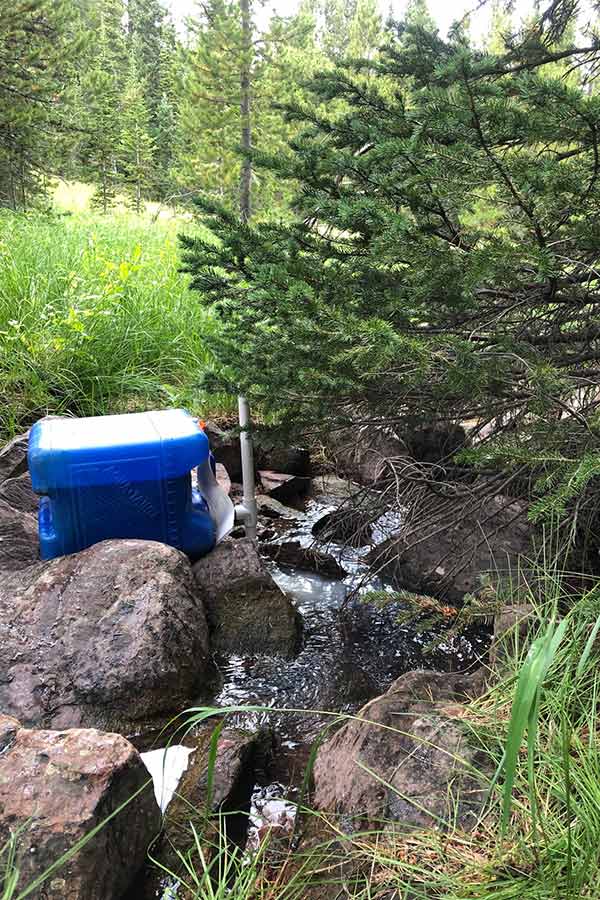Stream treatments to benefit cutthroat trout in High Uintas scheduled for late August
Vernal — The Utah Division of Wildlife Resources will once again be treating several streams in the High Uintas in an effort to help restore native Colorado River cutthroat trout.
In 2019 and 2020, DWR biologists treated the Potter and East Fork Carter Creek areas on the north slope of the Uintas with rotenone. Rotenone is a natural substance that comes from the roots of a tropical plant in the bean family. It's a respiratory toxin to fish, but isn't dangerous to people, pets or other wildlife, especially in the extremely low quantities that biologists use to treat the streams. A series of two or three treatments is standard protocol for effective cutthroat trout restoration, so biologists will treat this area again, for a third and final time, in late August 2021.
Why are rotenone treatments done?
In addition to increasing the diversity of angling opportunities, these project treatments will help the native fish. Habitat loss, breeding with non-native trout and competition from non-native trout have caused dramatic declines in native cutthroat trout populations around the West, leading to concerns about the species' future.
"As the trustee and guardian of wildlife in Utah, we're conducting Colorado River cutthroat trout restoration activities across the fish's native range," DWR Regional Sportfish Biologist Bryan Engelbert said. "The activities will protect the species, while also providing people with great areas to fish for these native fish."
Upcoming rotenone treatments in the Uintas
From Aug. 17–25, the DWR will chemically treat the following locations with rotenone:
- East Fork Carter Creek above the Sheep Creek canal
- Ram, Mutton and Bummer lakes
- West Fork Carter Creek above the Sheep Creek canal
"The treatment areas will be well signed and the area within 20 feet of the water is closed to the public for hiking and other uses the day before each treatment occurs," DWR Regional Wildlife Recreation Specialist Anthony Christianson said. "The areas will reopen after the treatment process is over."
The treatments will remove any remaining brook trout in the streams. Without intervention, biologists predict the brook trout populations could completely replace cutthroat trout in these areas in less than 20 years.
After the treatments
Because this is the third and final year for rotenone treatments in East Fork Carter Creek, the area will be restocked with Colorado River cutthroat trout immediately following this last treatment (tentatively in late September or early October). Ram and Mutton lakes will be restocked with fish in 2022, but West Fork Carter Creek and Bummer Lake will not be restocked until 2023 at the earliest.
This is part of a larger effort to treat the upper portions of streams connected to the Sheep Creek Canal to help create a meta-population for cutthroat trout that will contribute to conservation of the species and keep them from being listed under the Endangered Species Act.
Angler opportunities
Even though brook trout are being removed from the treatment areas, anglers can still find them in hundreds of streams and lakes throughout the Uinta Mountains. Biologists are also working to include these treated areas in the interactive Utah Fish Planner map on the DWR website, so the public can easily find waters to fish by species.
If you have questions about the treatment, call the DWR's Northeastern Regional Office at 435-781-9453.

















